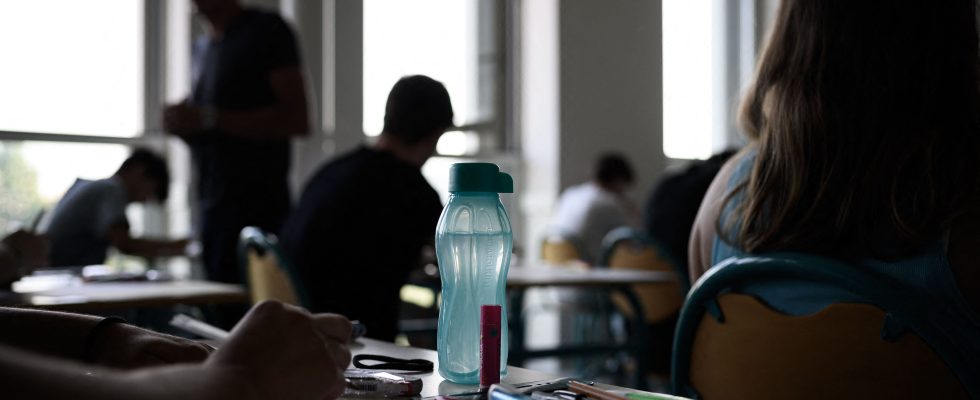We already knew that the air in classrooms in schools was polluted and poorly renewed. But a new study, carried out by Public Health France, quantified the consequences on children’s health, far from being negligible. Several tens of thousands of cases of asthma could thus be avoided in France each year, specifies this survey, which calls for increased efforts on this public health issue.
“This unprecedented work makes it possible to estimate that several tens of thousands of cases of asthma in children aged 6 to 11 are preventable each year in France through a reduction in exposure to formaldehyde and mold in classrooms,” says the public health agency in its conclusions. From construction materials to furniture, including school supplies and cleaning products, there can be multiple sources of pollutants in classrooms. And, without sufficient ventilation, students can be exposed to a potentially harmful chemical cocktail.
Nearly 28,000 preventable cases with “good air renewal”
Around 9,000 cases of asthma would thus be avoidable each year if all elementary schools respected the regulatory level of formaldehyde – a “marker of pollution from internal sources” – and nearly 28,000 with “good air renewal”, specifies the study. By eradicating visible mold in classrooms, nearly 12,000 cases of whistling would also be potentially avoidable.
After this “first estimate suggesting a significant benefit on child health” from reduced pollution, other studies must complete and refine the knowledge, sometimes locally. Given the “public health issue” of air quality in establishments, which accommodate 12 million students each year, it is important to continue reducing sources of exposure and improve ventilation, pleads the agency. Future assessments “will also look at the impact of road traffic in and near educational establishments in urban areas”, according to SpF.
Effects on learning
During his second presidential campaign and two years after the start of the Covid pandemic, Emmanuel Macron promised to launch “immediately a massive effort to purify the air in our schools, our hospitals and all public buildings”, insisting on 50,000 deaths due to pollution, “including some children”. But, at the end of August 2023, a group of doctors and associations still warned of poor indoor air quality “in too many schools” and called on the President of the Republic to keep his promise.
The general secretary of FSU-Snuipp, the first primary union (nursery and elementary), Guislaine David, recalls “that at the time of the Covid crisis, there was a lot of talk about air purifiers, but the Ministry of Education did not direct mayors to provide these devices. “A few CO2 sensors were installed in certain places, but they were often stored in the canteens,” this union leader regrets to AFP. As for the insufficient ventilation of classes, Guislaine David points out several difficulties: rooms on upper floors where opening the windows can be dangerous, equipment that is “often obsolete” (windows not easy to open, for example) and “ventilation that is too small “.
“When there are pollutants, children are always more affected because of their young age and because they are in the same class all day,” she warned, denouncing “a health scandal not taken into account charge”. “It’s expensive to renovate schools or build new ones.” In addition to harming their physical health, indoor air pollution can also affect children’s learning. “In recent years, several studies have shown that the increase in CO2 in classrooms is associated with a reduction in cognitive and academic performance,” says SpF. A more than crucial issue, therefore.
